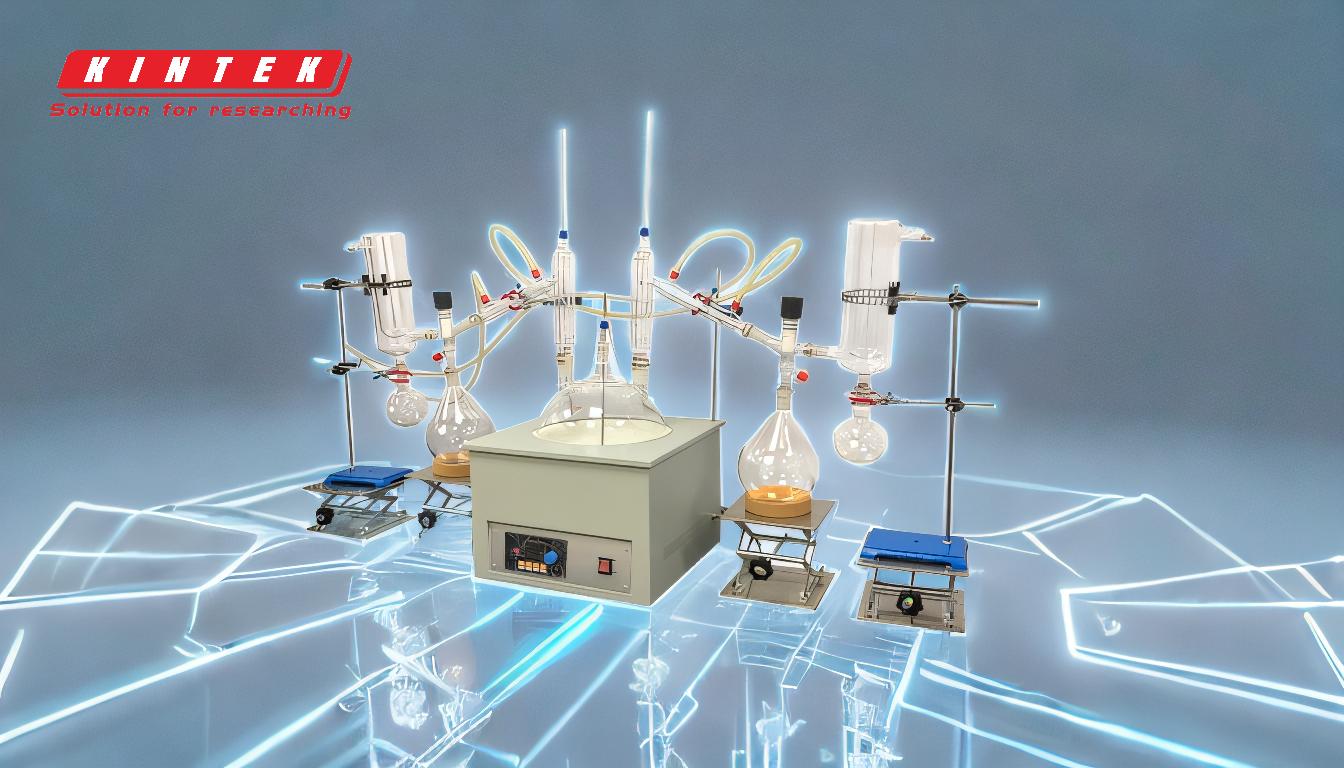Distillation is a widely used separation technique, but it is not universally applicable. Certain conditions, such as close boiling points of components, thermal sensitivity of materials, or the presence of azeotropes, can make distillation impractical or inefficient. Additionally, specific types of distillation, like molecular distillation or short-path distillation, have inherent limitations such as low separation efficiency, time-consuming processes, or loss of volatile solvents. Understanding these constraints is crucial for selecting the most appropriate separation method for a given application.
Key Points Explained:

-
Close Boiling Points of Components:
- Distillation relies on differences in boiling points to separate components. When the boiling points of the materials are too close (typically less than 80 °C apart), single distillation becomes ineffective. In such cases, fractional distillation or other separation techniques like chromatography may be required.
- Example: Separating ethanol and water, which form an azeotrope, requires more advanced methods like azeotropic distillation or membrane separation.
-
Thermal Sensitivity of Materials:
- Some compounds are thermally sensitive and may decompose, polymerize, or undergo chemical changes at high temperatures. Distillation, which involves heating, is unsuitable for such materials.
- Example: Pharmaceuticals or natural extracts containing heat-sensitive compounds may require gentler separation methods like freeze-drying or low-temperature extraction.
-
Presence of Azeotropes:
- Azeotropes are mixtures of two or more components that boil at a constant temperature and behave as a single substance during distillation. This makes it impossible to separate them using simple distillation.
- Example: Ethanol-water mixtures form an azeotrope at approximately 95.6% ethanol, making it challenging to obtain pure ethanol through standard distillation.
-
Limitations of Molecular Distillation:
- Molecular distillation is used for heat-sensitive and high-boiling-point materials but has limitations in separation efficiency and production time. The design of molecular stills often results in low separation, and the process can be time-consuming.
- Example: Purifying heat-sensitive oils or vitamins may require alternative methods like supercritical fluid extraction.
-
Short-Path Distillation Constraints:
- Short-path distillation is effective for separating high-boiling-point materials but can lose volatile solvents due to the short distance between the evaporation and receiving flasks. This limitation can hinder its application in certain industries.
- Example: Extracting essential oils or cannabinoids may result in the loss of volatile terpenes, reducing the quality of the final product.
-
High Energy Consumption and Cost:
- Distillation is energy-intensive, especially for large-scale separations or when dealing with materials with high boiling points. This can make it economically unfeasible compared to other separation techniques.
- Example: Desalination of seawater using distillation is less energy-efficient compared to reverse osmosis.
-
Environmental and Safety Concerns:
- Distillation involves heating and handling volatile substances, which can pose safety risks such as explosions or fires. Additionally, the process may generate waste or emissions, making it less environmentally friendly.
- Example: Distilling flammable solvents like acetone or ethanol requires stringent safety measures and may not be suitable for all facilities.
-
Alternative Techniques for Specific Applications:
- In cases where distillation is unsuitable, alternative separation methods like crystallization, membrane filtration, or liquid-liquid extraction may be more effective.
- Example: Separating proteins or enzymes from biological mixtures often requires techniques like ultrafiltration or chromatography rather than distillation.
By understanding these conditions and limitations, engineers and scientists can make informed decisions about when to use distillation and when to opt for alternative separation techniques.
Summary Table:
| Condition/Limitation | Explanation | Example |
|---|---|---|
| Close boiling points of components | Distillation becomes ineffective when boiling points are less than 80 °C apart. | Ethanol-water separation requires azeotropic distillation or membrane methods. |
| Thermal sensitivity of materials | Heat-sensitive compounds may decompose or polymerize during distillation. | Pharmaceuticals or natural extracts may need freeze-drying or low-temperature extraction. |
| Presence of azeotropes | Azeotropes boil at a constant temperature, making separation impossible. | Ethanol-water mixtures form an azeotrope at 95.6% ethanol. |
| Limitations of molecular distillation | Low separation efficiency and time-consuming process. | Purifying heat-sensitive oils or vitamins may require supercritical extraction. |
| Short-path distillation constraints | Loss of volatile solvents due to short distance between flasks. | Extracting essential oils or cannabinoids may lose volatile terpenes. |
| High energy consumption and cost | Distillation is energy-intensive, making it economically unfeasible. | Desalination of seawater is less efficient than reverse osmosis. |
| Environmental and safety concerns | Handling volatile substances poses safety risks and environmental issues. | Distilling flammable solvents like acetone requires stringent safety measures. |
| Alternative techniques | Crystallization, membrane filtration, or liquid-liquid extraction may be better. | Separating proteins or enzymes often requires ultrafiltration or chromatography. |
Need help choosing the right separation method for your application? Contact our experts today for personalized guidance!










